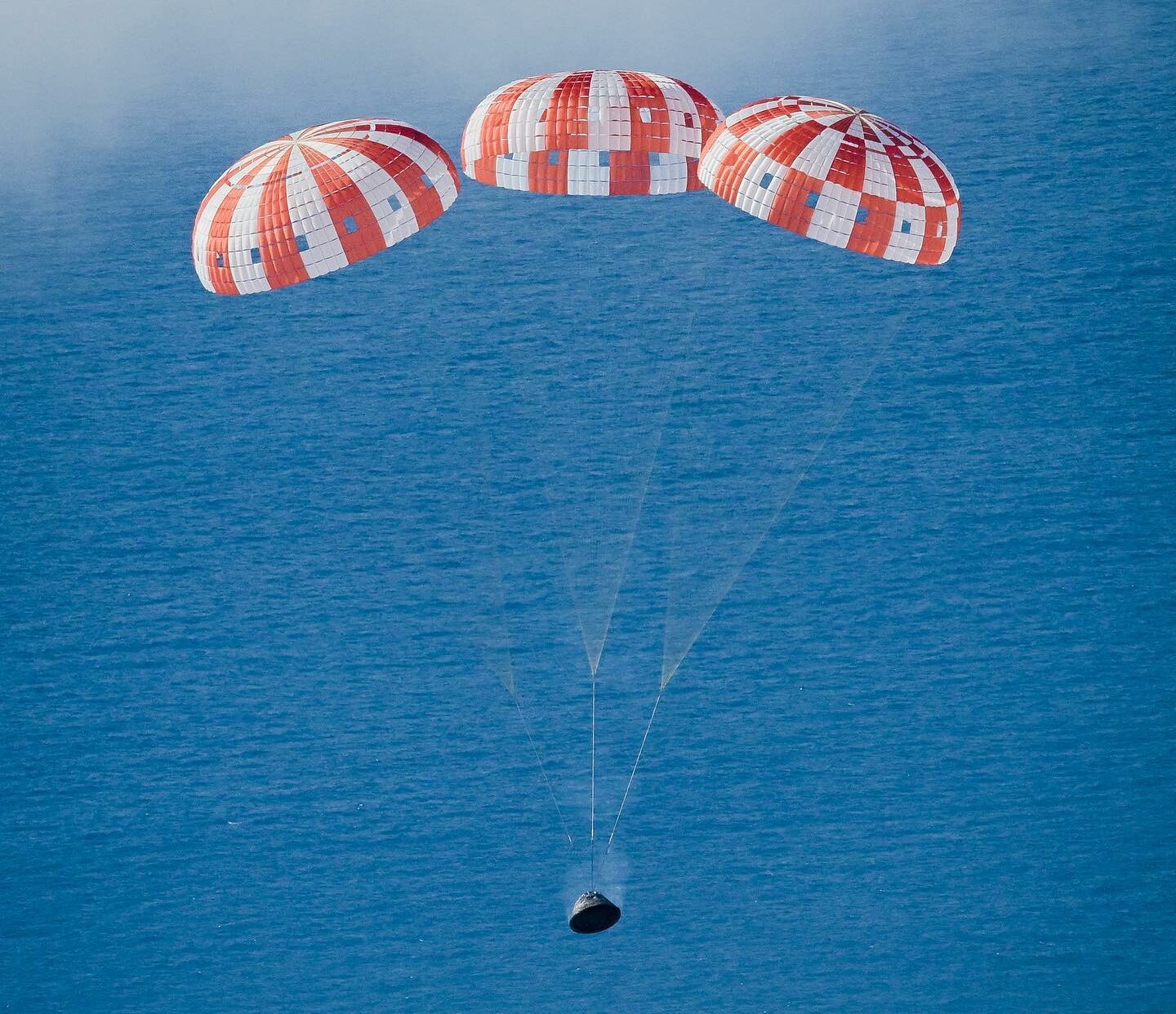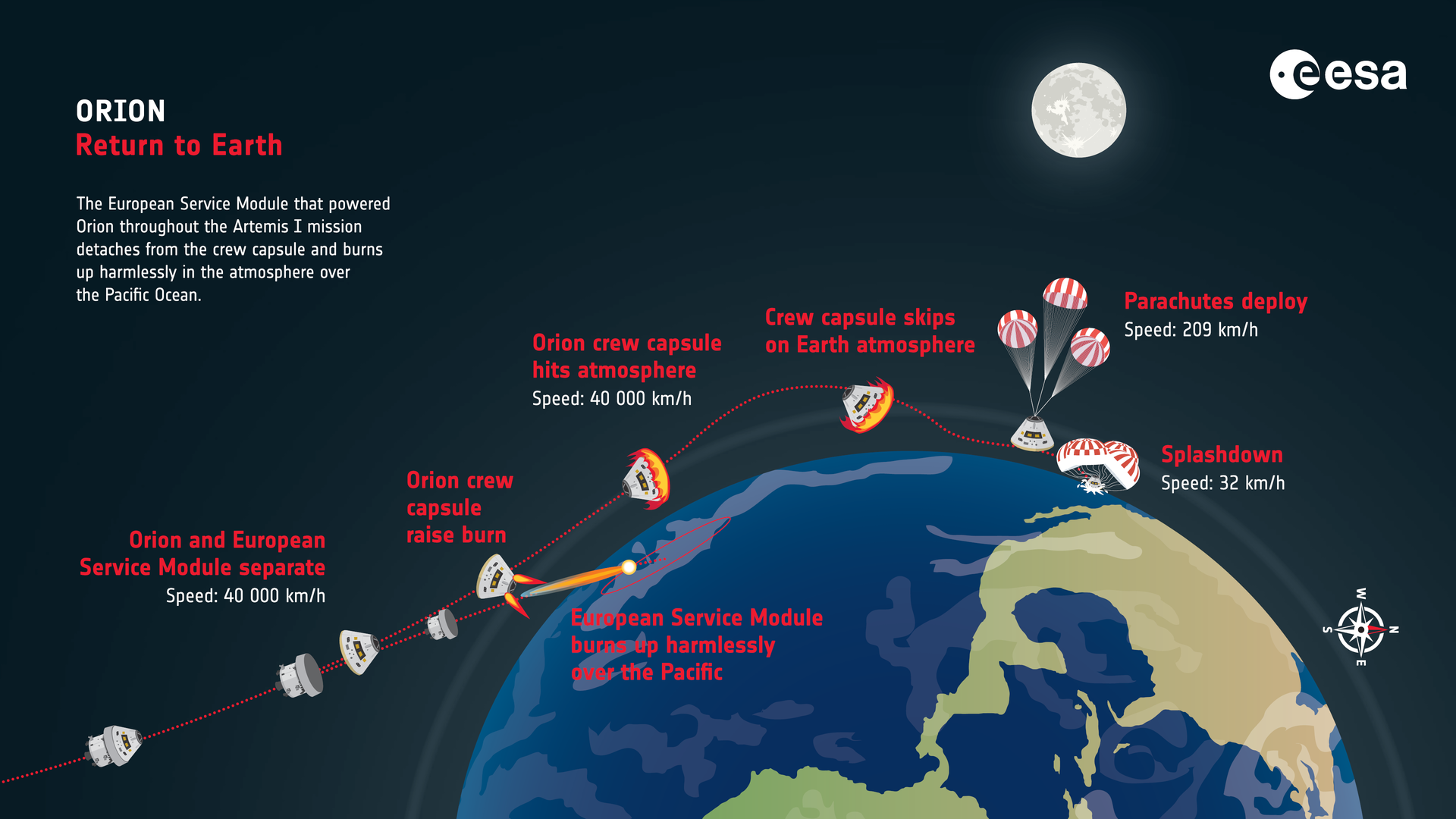Luna, this is how NASA’s Artemis 1 mission with Orion ended

NASA's Orion spacecraft has returned to Earth. The unmanned capsule is ditched safely in the Pacific Ocean off Mexico, successfully concluding the historic Artemis I mission
Splashdown of the Orion spacecraft in the Pacific Ocean: successful conclusion for the inaugural mission of NASA's Artemis lunar program.
NASA's unmanned Orion capsule ditched in the Pacific Ocean on the final return leg of its journey around the Moon. The US space agency reports it in a note , specifying that the capsule, which carried a fake crew made up of three dummies wired with sensors, fell into the ocean at dawn on December 11 off the Mexican peninsula of Baja California.
Orion completed its 25-day mission about two weeks after reaching its furthest point in space, about 434,500 kilometers from Earth. NASA had launched Orion on the gigantic Space Launch System (SLS) rocket on November 16 from the Kennedy Space Center in Cape Canaveral, Florida.
Fifty years after astronauts last set foot on the Moon, the Artemis 1 mission ends, paving the way for the Artemis 2 mission in 2024 when NASA will send a group of astronauts around the Moon.
It was December 11, 1972 when two astronauts aboard Apollo 17 – Eugene Cernan and Harrison Schmitt – became the last of 12 “moonwalkers”.
All the details.
WHAT HAPPENS AFTER ORION RETURNS TO EARTH
Now that Orion is back on Earth, the space agency will begin capturing data from onboard sensor-equipped dummies so it can prepare for future missions involving humans. "From the launch of the world's most powerful rocket to the remarkable journey around the Moon and back to Earth, this test flight is a major step forward in the Artemis generation of lunar exploration," said NASA Administrator Bill Nelson. "Today is a great victory for NASA, the United States, our international partners and all of humanity."
SUCCESS ALSO FOR ESA AND OUR COUNTRY
Everything worked as expected, including the Service Module built by the European Space Agency (ESA) with major participation from Italy, the Italian Space Agency and industry. ( Here Startmag 's insight into Artemis, here's what Leonardo, Thales Alenia Space and Argotec will do for NASA's first mission to the Moon ).
“ESA is a strong partner for NASA, which relied on the European Service Module to send astronauts to the moon,” ESA Director General Josef Aschbacher tweeted. Europe will continue to provide additional service modules for future Orion missions as a means of securing seats for its astronauts alongside their American colleagues.
THE ROADMAP OF THE ARTEMIS PROGRAM
The success of this first mission ushers in a new era of exploration for NASA Artemis (in Greek mythology Artemis was the sister of Apollo).
NASA's second Artemis mission, scheduled for 2024, will send a group of astronauts around the Moon. The agency plans to return humans to the lunar surface during Artemis 3, but that may not happen until 2026. If all goes as planned, astronauts will walk on the moon again half a century into the Apollo era.
But there's still a long way to go before NASA can send people to the moon aboard Orion and SLS, Axios points out. The US space agency also plans to one day build a small Gateway space station in lunar orbit to establish a long-term human presence and use the Moon as a test bed for human missions to Mars by the mid-2030s. Its broader Moon to Mars vision includes commercial partners like Elon Musk's SpaceX and the heavy-lift Starship rocket that could be ready for its maiden orbital test flight as early as next month.

This is a machine translation from Italian language of a post published on Start Magazine at the URL https://www.startmag.it/innovazione/luna-missione-artemis-1-nasa-orion/ on Mon, 12 Dec 2022 10:25:26 +0000.
